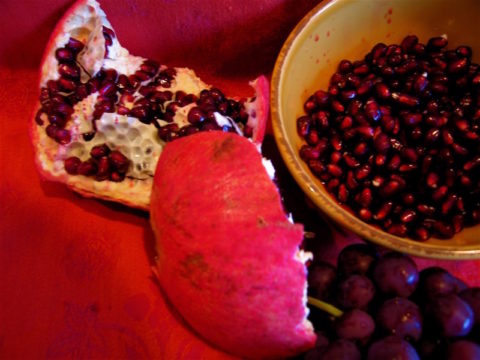It’s known as the longest night of the year.
“Shab-e-Yalda” or Yalda night is an ancient Persian cultural festivity marking the last day of fall.
It’s also referred to as Shab-e Chelleh, a celebration of winter solstice on Dec. 21. Persians all around the world gather with friends and family to celebrate and welcome winter into their homes. Other countries such as Afghanistan, Tajikistan, Uzbekistan, and Turkmenistan also celebrate the festival.
Here’s a look at the festival.
History:
Persians adopted the celebration from the Babylonians and incorporated it into their own rituals.
The word Yalda means birth in Syriac, a dialect that emerged two thousand years ago. The last day of the Persian month “Azar” is the longest night of the year, when the forces of “Ahriman” or evil are assumed to be at the peak of their strength.
The next day, the first day of the month “Day” — known as “khoram rooz” (the day of sun) — belongs to Ahura Mazda, the Lord of Wisdom. Since the days are getting longer and the nights shorter, this day marks the victory of sun over darkness.
In the past, Iranians celebrated Mithra, the goddess of light. To keep evil away, they kept a fire burning all night. This was also an opportunity to honor their deities and help others. Although the foundation of this celebration has remained untouched, the way it’s celebrated has changed over the years.
Today, Iranians welcome each other usually at the home of the elders to eat and drink until well after midnight. Elders read poetry from the two ancient Iranian poets, Hafez or Sa’adi. Each member of the family makes a wish and randomly opens the poetry book and asks the eldest member of the family to read it aloud. What is expressed in that poem is believed to be the interpretation of the wish and another way of fortune telling. This is called Faal-e Hafez (Hafez Omen).
This is an opportunity to celebrate life and a reminder of stepping into a new season.

“Pomegranate” photo by flickr user Meesh Rheault/creative commons.
Traditions, colors, and food:
Watermelon, pomegranate and dried nuts are perhaps the most important foods served on this night. The presentation is dominated in colors of red, yellow and orange to showcase the colors of fire.
Iranians believe by eating summer fruits they will defeat sickness in wintertime. Pomegranates, placed on top of a fruit basket, are reminders of the cycle of life — the rebirth and revival of generations. The purple outer covering of a pomegranate symbolizes birth or dawn; their bright red seeds, the glow of life.
Persian poetry on Yalda night also serves as a metaphor for other special meaning in today’s life: separation from a loved one, loneliness and waiting. But at the end, the waiting is over, light shines, and goodness prevails.
So from one Persian to all, Happy Yalda!
CCTV America’s Elmira Jafari occasionally blogs about Persian and Iranian culture. You can see more of her reporting here.
 CGTN America
CGTN America
 “Happy Yalda Night” photo by flickr user Ali Moradi / creative commons.
“Happy Yalda Night” photo by flickr user Ali Moradi / creative commons.
